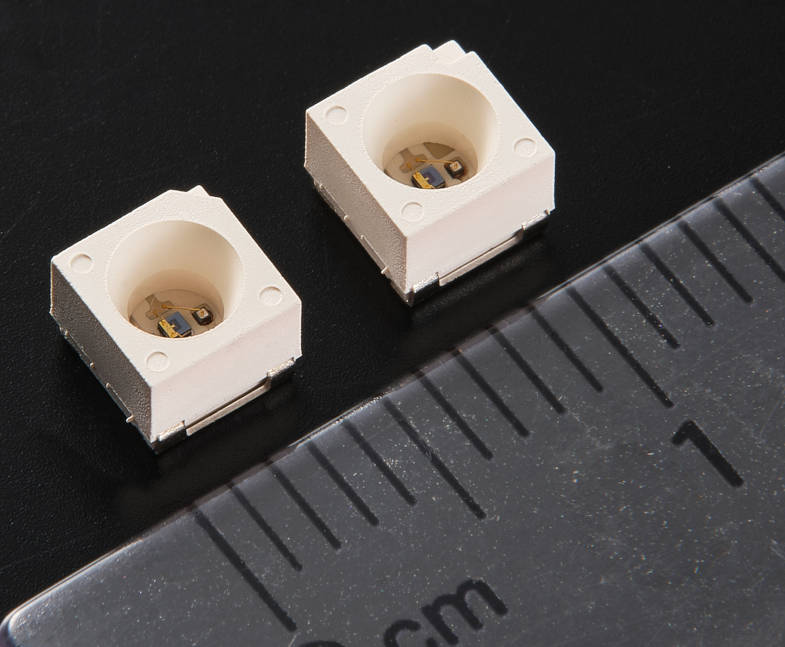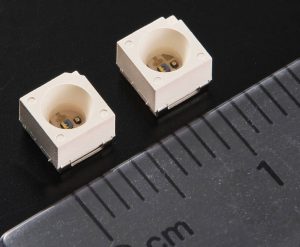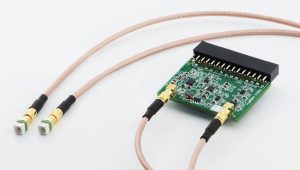

“Terahertz waves are anticipated to be applied to non-destructive testing, imaging and sensing in the medical and healthcare sectors, as well as potentially fast communication technologies,” according to the company.
The die within measure 500 x 500μm and are capable of oscillating and detecting ~320GHz energy, with an output power ranging from 10 to 20µW.
Positioned facing each other with the die 10mm apart, a typical dynamic range of 40dB can be achieved, according to the company. Oscillator and detector need around 10mW each.
“The terahertz R&D team and I have dedicated ourselves to THz devices for about 15 years. The journey has not been easy – we gathered the forces of industry, academia, and government along the way,” said Rohm R&D centre manager Ken Nakahara. “The team understands that this announcement is just a small step toward the commercialization of THz technology, but at the same time, it is a giant leap for us.”
 Evaluation kits are being created. Used with Digilent’s Analog Discovery 3 and a computer “users can easily operate terahertz wave oscillation and detection devices”, said Rohm.
Evaluation kits are being created. Used with Digilent’s Analog Discovery 3 and a computer “users can easily operate terahertz wave oscillation and detection devices”, said Rohm.
Both THz diodes and evaluation kits are only available to those entering into a non-disclosure agreement with ROHM.








